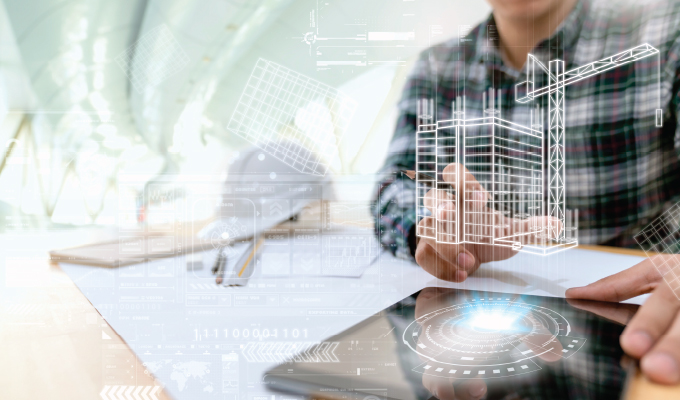The $1.2 trillion Bipartisan Infrastructure Framework is a boost for the construction industry and companies that win contracts and then repeat business will be those that complete projects on time and on target.
Digital technologies will be key to success, and the construction industry has some catching up to do. Digitalization in construction is lower than in nearly any other industry and it costs—in the form of time and budget overruns that occur because of project surprises, complications, and unforeseen circumstances.
But today, a new class of digital twin technologies is enabling savvy construction companies to avoid many of those construction hiccups, resulting in faster turnarounds; safer, more efficient jobsites; increased profits; and increased success all around.
3D DIGITIZATION DRIVES CHANGE
Digital twins are a digital representation of something in the physical world. But not all digital twins are in 3D, nor are they all accurate reflections of what that physical space looks like at any given moment.
Being in 3D and depicting real-time realities of a physical jobsite are game changers for the construction industry. 3D models done before construction starts are great, and tracking progress while construction occurs is a given. But keeping the 3D representation up to date regularly while construction occurs can often get lost. Quite often, on-site updating of BIM files is typically ignored or happens, at best, on a quarterly basis.
With 3D digital twin technology, off-site experts have in-depth access to on-site views into the as-built specifics of a project. As-built 3D representations are continually updated to reflect what’s going on with the actual construction site or facility, enabling builders to constantly track correct implementation of design intent as manifested by the BIM data. This makes it possible and easier to manage the multiple complexities inherent in projects and to identify and prevent problems before they occur.
Also, 3D digital twin technology increases trust between project owners and contractors because owners can easily log into such systems and see what’s going on with their projects.
3D DIGITAL TWIN PLATFORMS
3D digital twin platforms are gaining ground as a powerful, cost-effective tech investment for builders. Owners will increasingly expect contractors to have the latest technology. When considering a 3D digital twin platform, consider:
- Functionality and flexibility.
Many digital twin platforms are sophisticated and complicated, or they’re really easy to set up, but don’t provide much functionality to the enterprise. Contractors and owners need something that is both simple and powerful. User interfaces should be both intuitive and versatile in adapting to project specifications and jobsite constraints. - Ease of deployment.
Not all contractors have the same skill sets or level of technical expertise. The infrastructure bill will increase demand for workers at a time when there’s already a shortage. Any 3D digital twin solution needs to be usable by people with little technical training, and still be robust enough to be useful to people with extensive experience—whether the project is a new, high-tech building, a road or bridge, or simple renovation project. - Data collection.
All data matters on construction sites that are constantly changing. Data comes in from 360 cameras, drones, robots, scanners, and people. You want a unified platform that can use data from any source so you get the most complete view possible of conditions. - Data analysis.
Having data is one thing, extracting insights from it is the next step. Construction jobsites change daily. With an intelligent system that can analyze data captured on site alongside BIM files, contractors will reduce deviations and site misses on a consistent basis. - Security and open collaboration.
Granular authentication and access permissions are a vital part of any successful digital twin platform so people can see and control what they’re supposed to—and unauthorized access is prevented.
CHOOSE SMART TO BUILD SMART
The goal of rebuilding U.S. infrastructure–given the technologies now available—is nothing less than a mandate to build smart and strengthen our infrastructure for decades to come. The keys to building smart lie in a new wave of digital tools including 3D digital twin technology.
CLOSING THOUGHT
Having the right tool for the job has always been critical for success and today’s tools are better than ever. Not only will infrastructure projects be more likely to come in on time and on budget, but contractors will boost their reputations as trustworthy partners and win repeat business from owners, as well.
About the Author:
Simon Bae is CEO and founder of Cupix, a San Jose, California-based leader in 3D digital twin technology for general contractors, owners, and property managers. In a career spanning more than 25 years, Bae previously founded and served as chief executive of INUS Technology and VisPower, both later acquired by 3D Systems. For more, www.cupix.com.
Modern Contractor Solutions, January 2022
Did you enjoy this article?
Subscribe to the FREE Digital Edition of Modern Contractor Solutions magazine.



